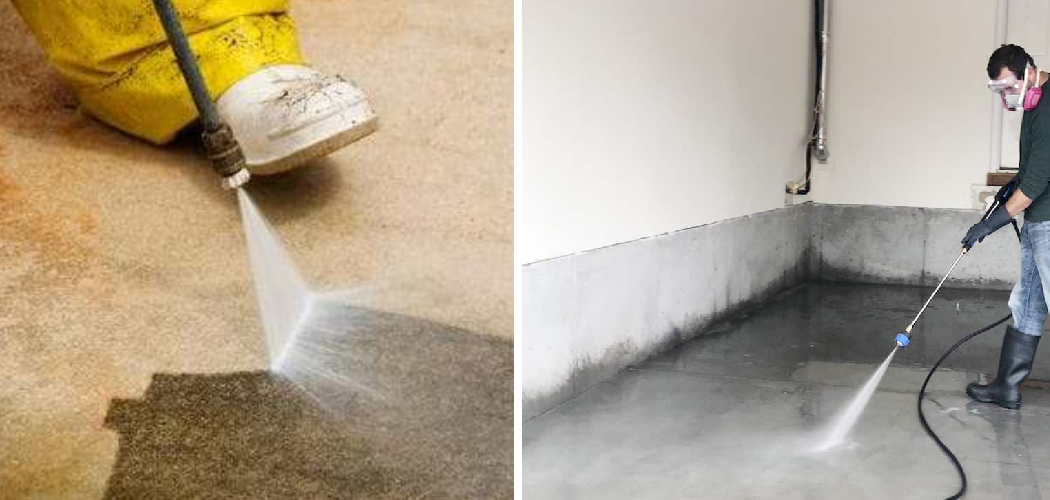Are you tackling a DIY project? If so, it’s important to know how to properly use pressure washing equipment. Pressure washing your garage floor can be a great way to clean and restore the area without having to worry about getting water on other surfaces.
But if you’re not careful with the pressure washer, it’s very possible for walls and other objects in your garage to get wet when using this powerful tool. In this blog post, we’ll explain some helpful tips so that you can learn exactly how to pressure wash garage floor without getting walls wet!
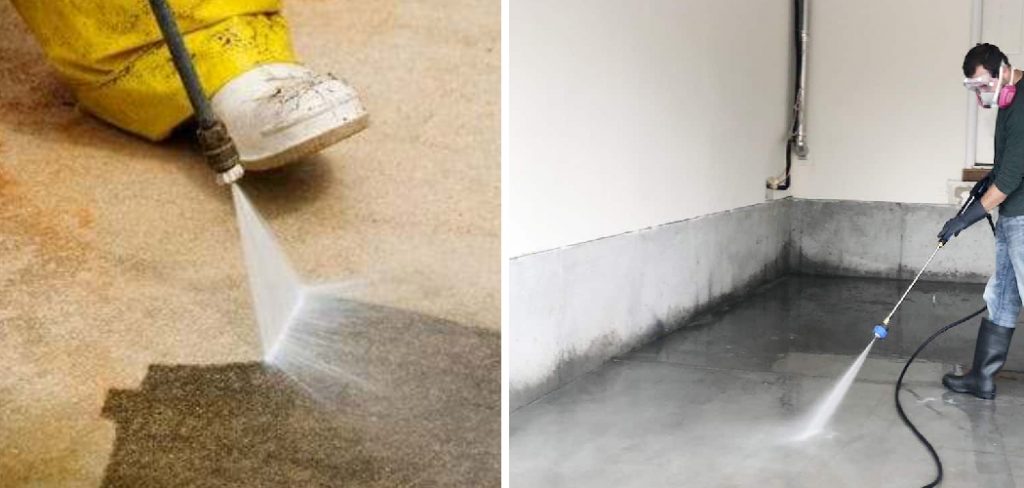
9 Best Ways on How to Pressure Wash Garage Floor Without Getting Walls Wet
1. Position the Pressure Washer Correctly:
Before you begin, make sure that your pressure washer is positioned in an area where it will not spray any type of water onto walls or other objects in the garage. If you need to move the pressure washer around to get better access, be sure to use extra caution so that walls do not get wet.
2. Use Plastic Sheeting:
Using plastic sheeting is a great way to protect walls and other objects in the garage from water damage. Simply hang up the plastic sheeting on any walls that you do not want to get wet, or drape it over any large furniture or appliances that may be located near the area where you will be pressure washing.
3. Adjust the Nozzle:
If you are using a pressure washer with adjustable nozzles, make sure to adjust it to the appropriate setting for your garage floor cleaning task. For most tasks, a wide fan-shaped nozzle is best as it provides a gentle and even spray pattern that will not get too close to walls or other objects.
4. Start from the Top and Work Your Way Down:
When pressure washing your garage floor, it’s best to start from the top and work your way down towards the bottom of the area you are cleaning. This will help to ensure that water does not spray onto walls or other surfaces above the area you are cleaning as you work. Starting from the top and working your way down will also give you more control over where the water is spraying.
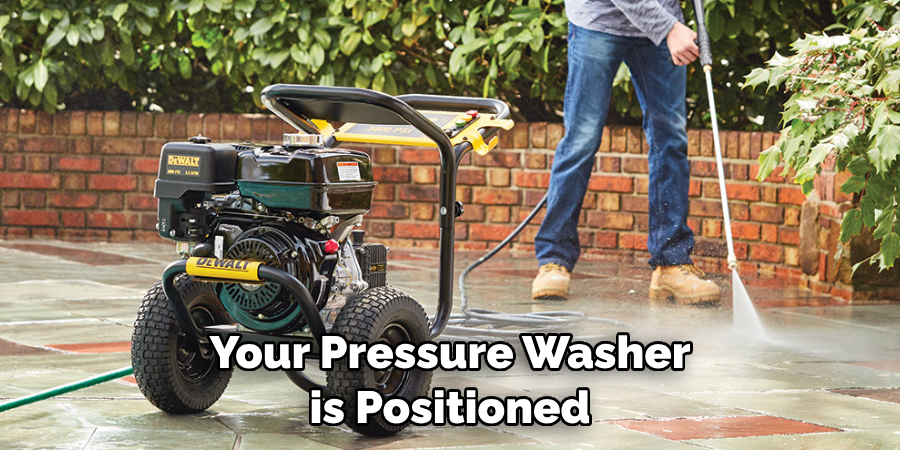
5. Use a Low-Pressure Setting:
Using a low-pressure setting on your pressure washer is crucial for ensuring that water does not spray onto walls or other objects in the garage. Typically, a low-pressure setting of about 500-1000 PSI will be sufficient for most cleaning tasks, but you may need to adjust this depending on the task at hand and the type of pressure washer you are using.
6. Keep Moving:
When using a pressure washer, it’s important to keep the nozzle moving at all times. If you leave the nozzle in one spot for too long, there is a greater chance that water will spray onto walls or other objects in your garage. Aim to move the nozzle in a slow, steady motion as you work so that all areas are evenly cleaned without water spraying onto walls or other objects.
7. Use Extension Wands:
If your pressure washer has an extension wand attachment, using it can help minimize the amount of water that gets on walls and other objects in your garage. An extension wand attachment will give you more reach and flexibility when pressure washing, allowing you to clean areas that are further away without having to worry about water getting onto walls.
8. Use a High-Pressure Setting for Tough Stains:
If there are tough stains or heavily soiled areas on your garage floor, it may be necessary to use a high-pressure setting on your pressure washer in order to remove them. When doing this, be sure to take extra care to avoid spraying water onto walls or other objects in the garage. This can be done by keeping the nozzle far enough away from walls and other objects so that water does not reach them.
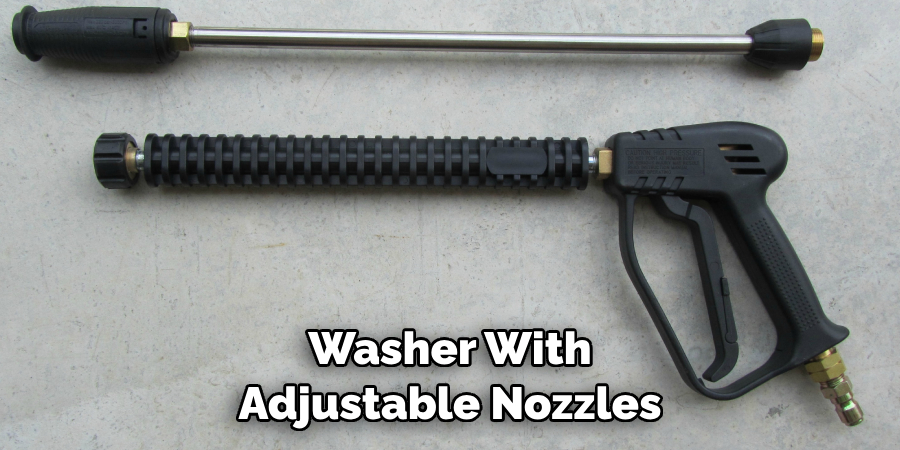
9. Rinse with a Garden Hose:
After you are finished pressure washing your garage floor, it’s always a good idea to rinse off any remaining soap residue with a garden hose. This will help to ensure that all areas are clean and free of debris without having to worry about water spraying onto walls or other objects in the garage.
By following these tips, you’ll be able to pressure wash your garage floor without getting any walls wet! As long as you take the necessary precautions and use proper safety gear, pressure washing can be a great way to spruce up your garage without having to worry about water damage. So, get out there and start taking on those DIY projects!
Additional Tips and Tricks to Wash Garage Floor Without Getting Walls Wet
1. When you are finished using the pressure washer, take a few minutes to check for any remaining spots on the floor, and use a scrub brush or old towel to remove them. You can also use a degreaser or special cleaner made specifically for garage floors if needed.
2. If you have any cracks in your floor, it is important to make sure you don’t get the pressure washer too close to them and try to avoid spraying directly into them. If you are unsure about how far away you should be, it is best to consult a professional or use the lowest setting possible.
3. Make sure to clean up any debris or dirt that accumulates near the walls while pressure washing your garage floor. This will help prevent any water from dripping onto the walls and causing damage.
4. After you have finished pressure washing, be sure to seal your garage floor with a sealant recommended by the manufacturer of the product you used. This will help protect your floor from further damage and keep it looking great for years to come.
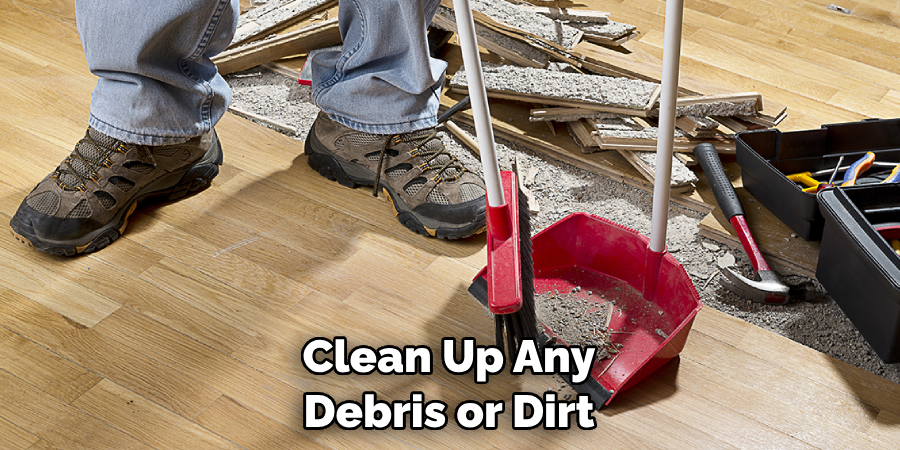
5. Consider getting an extension hose for your pressure washer to make it easier to reach the corners of your garage floor. This will help you avoid getting any water on the walls and also make sure that you don’t miss any spots when cleaning.
6. If you have an outdoor power outlet in your garage, consider using a portable pressure washer instead as this can significantly reduce the amount of time it takes to clean your garage floor. This is also safer than using a standard pressure washer indoors as the risk of electrocution is much lower.
7. Finally, always make sure to wear protective clothing and goggles when using a pressure washer, as they can be very powerful devices that can cause serious injury if used incorrectly.
Following these tips and tricks will help to ensure that you can pressure wash your garage floor without getting the walls wet. Pressure washing is a great way to keep your garage floor looking clean and fresh, and it’s important to make sure you take the necessary precautions to avoid any damage. With proper care and maintenance, your garage floor should remain in excellent condition for years to come!
Advantages of Pressure Washing Garage Floors
1. Pressure washing your garage floor can help remove built-up dirt and debris that may have accumulated over time.
2. It can also improve the appearance of the area, making it look cleaner and more inviting.
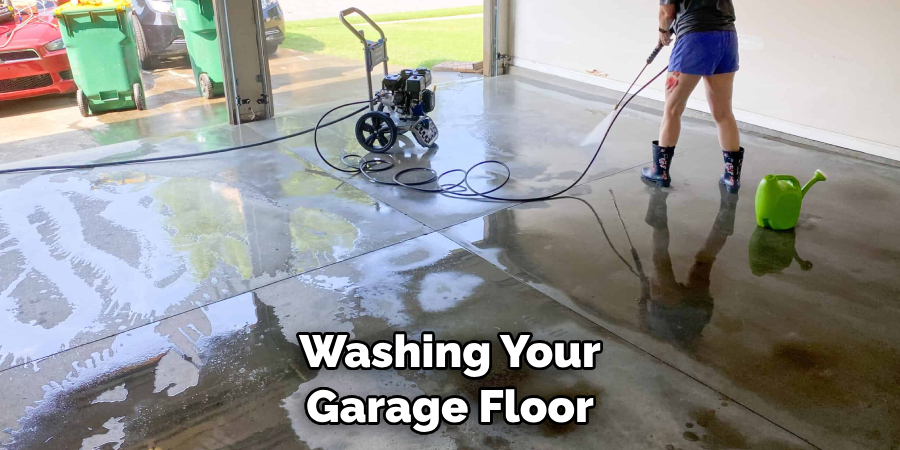
3. Pressure washing is a relatively quick and easy way to clean your garage floor without using harsh chemicals or scrubbing for hours on end.
4. The high-pressure stream of water can help break up stubborn stains and grime that may have accumulated over the years.
5. Pressure washing also helps kill mold and mildew, which is essential for keeping your family healthy.
6. Finally, pressure washing can extend the life of your garage floor by removing any damage due to salt or other chemicals that may have seeped into the concrete.
These advantages make pressure washing an ideal choice for cleaning garage floors. However, it’s important to avoid getting your walls wet while completing the job.
Frequently Asked Questions
What Type of Pressure Washer Should Be Used?
The size and power of the pressure washer you will need to use depends on the size and condition of your garage floor. Generally, a unit with between 1,500 and 3,000 PSI can work for most sizes of garage floors. For a larger or more heavily soiled floor, a higher PSI may be needed.
What Type of Nozzle Should Be Used?
When pressure washing your garage floor, it is important to use the correct type of nozzle. You should avoid using high-pressure nozzles as these can damage the walls and other surfaces near the floor. A low-pressure, fan-style nozzle should be used instead to ensure even coverage and adequate cleaning power without risking damage to other fixtures.
What Type of Detergent Should Be Used?
It is important to use a detergent that will effectively remove grease and oil but won’t cause too much sudsing or foaming. A degreaser or detergent specifically designed for pressure washers is best and will ensure the most effective cleaning with minimal risk of damage.
What Is The Best Technique For Pressure Washing?
When pressure washing your garage floor, it is important to use a steady back-and-forth motion and keep the nozzle moving at all times. You should start at one end of the floor and work your way to the other, ensuring that the entire surface is covered. Make sure to keep a steady distance from the nozzle to the floor and avoid letting it linger in any one place for too long.
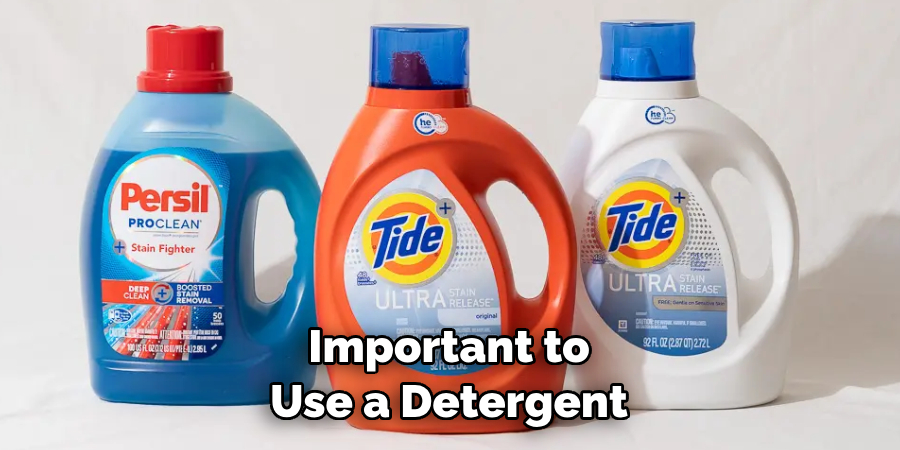
How Often Should I Pressure Wash My Garage Floor?
It is recommended that you pressure wash your garage floor at least once a year. More frequent washing may be necessary if the floor is exposed to heavy dirt, grease, or oil on a regular basis. Additionally, it can help to use a degreaser or detergent designed for pressure washers in between regular washings to keep the floor clean and free of debris.
Conclusion
Now you know how to pressure wash garage floor without getting walls wet. Choose an appropriate pressure washer and nozzle, use the right type of detergent, and follow the best technique to keep your garage floor clean while avoiding damage to nearby fixtures. Regularly pressure washing your garage floor once a year or more as needed will help keep it in good condition for years to come.
